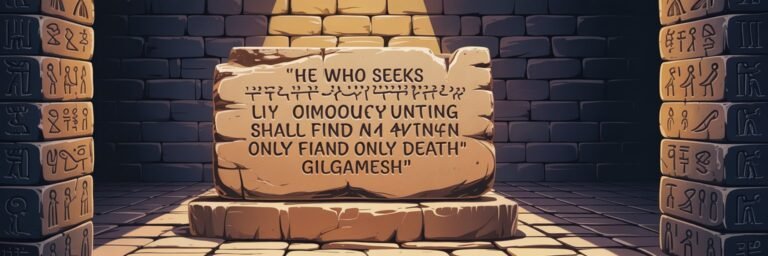INTRODUCTION
Ancient Mesopotamia, often referred to as the cradle of civilization, was the geographical area that saw the birth of some of the most significant advancements in human history. This alluring region, nestled between the Tigris and Euphrates rivers in modern-day Iraq, was home to empires that achieved astonishing cultural and technological progress. Its narrative is one of immense triumph and devastating decline—a tale encapsulating the rise and fall of man’s first attempts at organized living within the framework of society.
HISTORICAL BACKGROUND
Human settlements in ancient Mesopotamia can be traced back to approximately 10,000 B.C., with societies primarily structured around agriculture—a consequence was an increasingly centralized community, leading to the establishment of the first known cities by 4,000 B.C. The Sumerians were the first prominent culture to rise in the region; it was they who laid the foundation for subsequent Mesopotamian civilizations like the Akkadians, Babylonians, and Assyrians, among others.
The Sumerians were a technologically advanced culture, creating cuneiform—the earliest form of writing—as a method to record transactions, epic tales, and religious texts on clay tablets. They also conceived the concept of the time measurement system, which we still use today—60 seconds in a minute, 60 minutes in an hour, and importantly, the 12-month calendar.
Among the empires that followed, the Akkadian Empire, under the rule of Sargon, was the first to unite all of Mesopotamia under a single ruler around 2300 B.C. Recurring empires—Babylonians, Hittites, and Assyrians—each added layers to Mesopotamian culture, influencing virtually every aspect, from law, religion, to administration, much of which has permeated into contemporary society.
THEORIES AND INTERPRETATIONS
The interpretation of ancient Mesopotamia’s rise and fall has been a highly debated focal point amongst historians and archaeologists. The consensus views the rise of Mesopotamian civilizations as a product of favorable geography and environmental conditions. The region’s fertile soil, coupled with the use of the Tigris and Euphrates rivers for irrigation, made the area conducive for agriculture, enabling population growth and civilization development.
However, the decline of Mesopotamia is often attributed to factors ranging from internal conflicts and socio-economic decline to environmental degradation. While some historians typically ascribe the downfall of these civilizations to internal strife and warfare, emerging theories suggest that environmental changes played a significant role.
Dr. Jennifer Pournelle’s theory is particularly compelling. She posits that the extensive irrigation practices led to increased soil salinity, thereby lowering agricultural yields. As food production dwindled, socio-political instability ensued, culminating in the fall of respective empires.
MYSTERIES AND CONTROVERSIES
Despite extensive research, puzzles and controversies persist in the study of ancient Mesopotamia. About the Sumerians—the original builders of this civilization—many questions remain unanswered. For instance, their origin remains shrouded in mystery, with theories ranging from them being indigenous to the region, to them being foreign settlers.
A fiery debate exists within academic circles regarding the cause for the abrupt demise of the Akkadian Empire. The mainstream explanation has been warfare and political infighting. However, an alternative hypothesis proposed by Dr. Harvey Weiss of Yale points to a devastating 300-year drought as the root cause, a theory supported by geological evidence.
SYMBOLISM AND CULTURAL SIGNIFICANCE
Ancient Mesopotamia’s legacy is deeply imbued within the symbols, religious practices, and societal structures we observe today. Their pantheon of gods influenced Greek, Roman, and even Abrahamic religious systems. Iconic structures such as the Ziggurat were the precursors to modern-day step pyramids and skyscrapers.
Mesopotamian societal structures pioneered urban living, trade, taxation, law, and governance. Hammurabi’s code, one of history’s earliest known legal code, ensures King Hammurabi of Babylon occupies a venerable position in every legal textbook.
MODERN INVESTIGATIONS
Modern investigations into ancient Mesopotamia have been steered towards understanding their societal structure and technological advancements rather than merely recording historical events. Archaeologists are utilizing advanced technologies such as ground-penetrating radar and infrared spectroscopy to glean insights into ancient city layouts and irrigation techniques. Furthermore, cryptographers and linguists are decoding ancient cuneiform texts to comprehend literature, law, and societal norms of that era better.
A significant contemporary effort has been directed towards conserving the priceless heritage sites of Mesopotamia, in the face of ongoing conflict and cultural vandalism in the region.
LEGACY AND CONCLUSION
The true essence of the ancient Mesopotamian legacy is perhaps best encapsulated by the continuity of their contributions to present-day society. Their groundbreaking feats, from the invention of writing to the establishment of urban cities, continue to shape the world. Their comprehensive legal codes have influenced legal systems globally, and their religious beliefs have left an indelible mark on the world’s leading religions.
The Mesopotamian civilization was more than merely the cradle of organized societal living—it was the birthplace of the modern world. Despite its eventual decline, ancient Mesopotamia’s rise tells a captivating narrative of human resilience, innovation, and cultural enrichment, an inspirational tale for present and future generations. Hence, it remains an enduring topic of exploration and study, continually shedding new light on our collective past.






